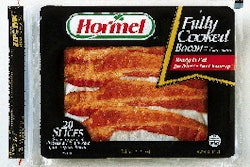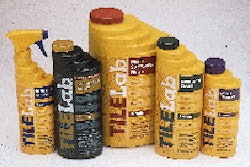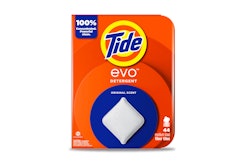Ditto for manufacturers who use cold-seal packaging for medical devices and drug store products. But they have until mid-1999 to make their decision, as opposed to everyone else, who had to display "allergy warnings" as of Sept. 30, 1998. "We have a lot of decisions to make," concedes John McKeegan, spokesman for Johnson & Johnson's consumer products division, Skillman, NJ. That division makes Band-Aid-brand products, which use cold-seal packaging for bandages, gauze and other products. J&J is luckier than some other companies. Manufacturers in 40 product categories such as medical gloves, condoms, hot water bottles, tracheal tubes, catheters, in-vitro diagnostics and nearly 20ꯠ models of medical devices had to put one of four new labels on their products and any of two on their packages--if either contained rubber--starting Sept. 30, 1998. The warnings were required in order to protect people who have allergies to rubber. The rules as they apply to packaging have created a little bit of confusion. The FDA said that no label is necessary on packaging as long as the person who opens that package does not come into contact with the rubber-containing adhesive, and the adhesive is the only source of rubber in the packaging. Lon McIlvain, manager of regulatory affairs and quality assurance for Ansell Intl., Eatontown, NJ, says that guidance is subjective. Consumers open packages in different ways. There is no definitive answer to the "consumer contact" question for each package. Manufacturers have to make a judgment call. A number of manufacturers asked the FDA to further clarify this issue before the rule went into effect on Sept. 30, 1998. The agency declined. Ansell sells Medi-Touch latex gloves, Lifestyles® condoms and other products that are subject to the rule. "To my knowledge, the need for warning labels on packaging containing rubber in its adhesive has not been properly resolved," states McIlvain. For packages that contain rubber in packaging components besides the adhesives, the two acceptable warning statements are: "Caution: The Packaging of This Product Contains Natural Rubber Latex Which May Cause Allergic Reactions" or "The Packaging of This Product Contains Dry Natural Rubber." Regardless of any confusion on the part of packagers over what is "incidental" customer contact with adhesives, the FDA at least believes it addressed the issue head-on in its final rule of Sept. 30, 1997. However, when that rule was issued, the FDA said nothing explicitly about cold-seal packaging, where paperboard is often impregnated with latex. "It was an artform we were unfamiliar with," admits Donald Marlowe, an FDA official. During the first half of 1998, there was grumbling by companies about if and how the adhesives dictum applied to cold-seal packaging. Marlowe says the agency realized it had not answered that question in the final rule. Then the Health Industry Manufacturers Assn. (HIMA) submitted a petition to the FDA on June 5, 1998, asking the FDA to lift the Sept. 30, 1998, deadline for packaging. The FDA answered on June 19, agreeing to give cold-seal packaging an additional 270 days beyond Sept. 30, 1998. All other packaging had to be relabeled. A company called Eastern Research Group, Inc., Lexington, MA, did an analysis that showed approximately 2ꯠ medical device models being sold in cold-seal packaging. J&J's McKeegan explains the company is likely to change the adhesives in its packaging, although it could decide to get out of cold-seal packaging for bandages entirely. Some products will have to carry allergy warnings on their packaging. Moreover, products such as condoms must carry a warning on the individual foil wrapper and the box containing the individual condoms. Bob Habig, regulatory director at Becton Dickinson & Co., Franklin Lakes, NJ, says his company will put warning labels on its Ace(TM) bandage products, which contain latex. But Habig says the company does not use cold-seal packaging. It does use paperboard cartons with latex adhesives, but Becton Dickinson does not believe the cartons need warning labels.
Rubber hits the road at FDA
Agency tells companies with rubber in products and packaging to get rid of the latex or use warning labels.
Apr 30, 1999
How AI is reshaping CPG manufacturing operations
Today’s CPG companies are faced with mounting challenges in their manufacturing operations. You have the data that could help you, but can you turn that data into knowledge? See how artificial intelligence can help. Learn what’s working for Pfizer, Post, and Smithfield.
Read More
New ebook focused on cartoning equipment
Read about the various types of cartoning equipment, how to select the right one, and common pitfalls to avoid. Plus, read equipment advice from CPGs for ultimate cartoning success.
Read More





















